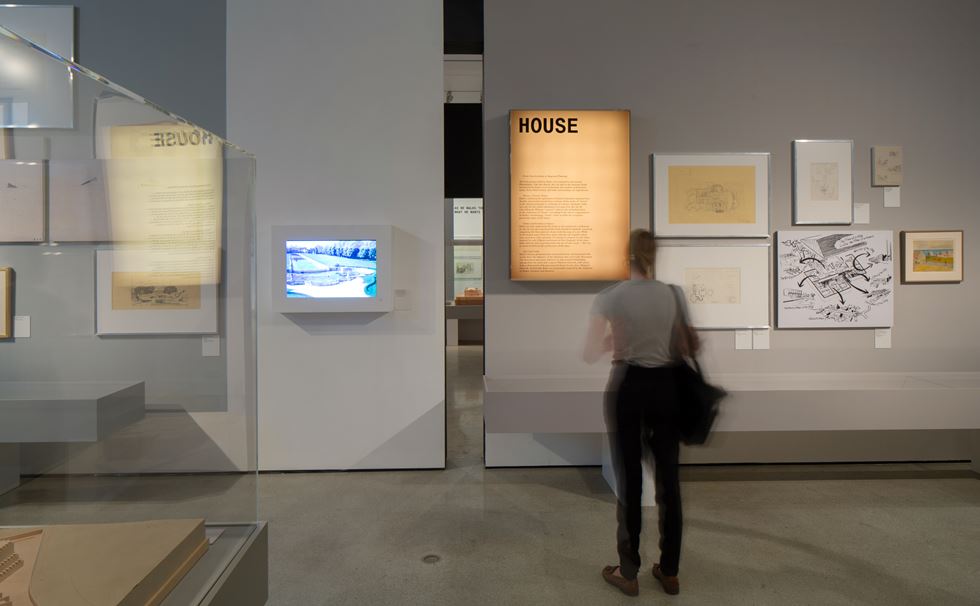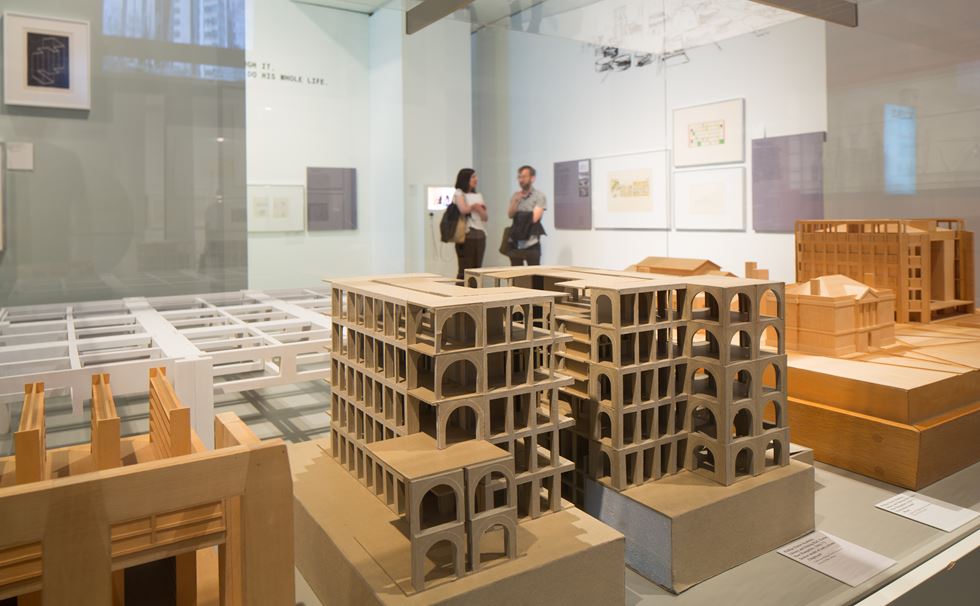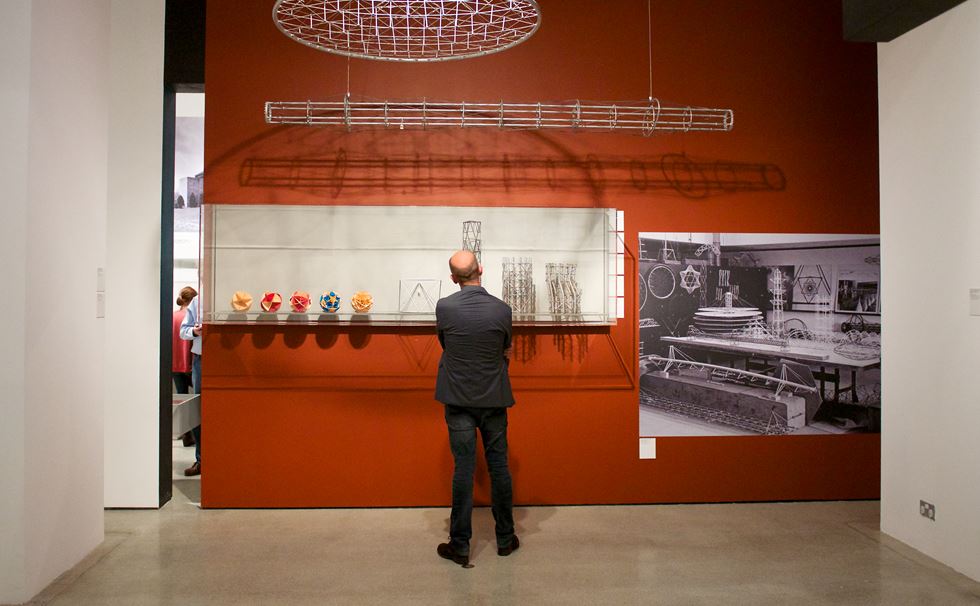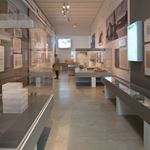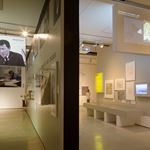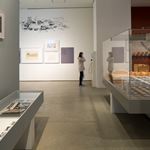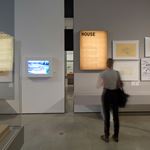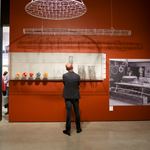Profile
Louis Kahn
Believe in Monumental
Visionary architect, expert manipulator of form and light, highly complex individual, Louis Kahn (1901-1974) is one of the most influential architects of the mid-twentieth century. He realised relatively few buildings, yet the formal restraint and emotional expressiveness of his Jonas Salk Institute, Kimbell Art Museum and the Capital Complex in Dhaka are regarded as an inspired interpretation of Modernism. Louis Kahn died on the evening of 17 March 1974, but when his body was discovered in the public lavatory at Penn Station in New York, it took several days for the police to identify him as one of the world’s most admired architects. He had died swiftly of a heart attack and the only form of identification among his possessions was his passport in which he had crossed out his address. On the evening of his death, Kahn had flown back to the US from India where he was building the Indian Institute of Management in Ahmedabad. He had gone to Penn Station to board a train home to Philadelphia. The Institute of Management and another ongoing work, the Capital Complex of government buildings at Dhaka in Bangladesh, were not only Kahn’s most ambitious projects, but architectural masterpieces now revered by architects across the globe. Yet he had built so little during his life that he died bankrupt owing hundreds of thousands of dollars. The few buildings that Louis Kahn did realise were so remarkable that they established him as one of the most important figures in twentieth century architecture. While his influence is compared to that of Le Corbusier and Mies Van Der Rohe, his work offered new intellectual possibilities to the younger generation of architects searching for alternatives to their hegemonic International Style. He showed that it was possible to design modern buildings without using lightweight materials such as steel and glass that were associated with Modernism and the International Style. Convinced that contemporary architects could – and should – produce buildings which were as monumental and as spiritually inspiring as the ancient ruins of Greece and Egypt, Kahn devoted his career to the uncompromising pursuit of formal perfection and emotional expression. Eminent though he later became, much of Kahn’s life was a struggle. His Estonian father, Leopold, met Louis’ mother, Bertha, in the Latvian city of Riga, while there on army leave. The couple settled on the Estonian island of Saarema (then called Ösel) where Louis was born in 1901 followed by his sister, Sarah, and brother, Oscar. The family was so poor that Leopold left for the US and, once he had found work, sent for Bertha and the children to join him in Philadelphia. Shortly after their arrival, five year-old Louis was afflicted by scarlet fever. Together with the facial scars left by an earlier accident, when he burnt himself on a coal fire, this illness left him too weak to start school and he was taught at home. When Louis finally went to school, the shy boy was so gifted at art and music that his teachers steered him towards the special courses for talented students in Philadelphia’s enlightened education system. Despite his family’s poverty, Kahn received an excellent education and, inspired by a high school course in architectural history, won a scholarship to study architecture at the University of Pennsylvania. There he was taught by Paul Philippe Cret, a Frenchman schooled in the rigorous Beaux-Arts tradition. An inspiring teacher, Cret instilled his students with his own belief that the architect’s responsibility was to interpret their own time. ‘Our architecture is modern and cannot be anything else’ he decreed. Kahn excelled in his four years at the University of Pennsylvania and, after graduating in 1924, was employed by the Philadelphia architect John Molitor. Four years after graduating he had saved enough money to travel to Europe, where he visited his relatives in Estonia and saw his first modern movement buildings in Berlin. Back in Philadelphia, he found work with Paul Cret and married Esther Israeli, a research assistant at the University of Pennsylvania. When the 1930s depression struck, Kahn was made redundant and, for several years, he and Esther were supported by her parents. Despairing of finding work as an architect, he continued his studies and flung himself into the debates stimulated by T-Square, the radical architectural journal based in Philadelphia. Inspired by Le Corbusier’s work in Europe, Kahn developed his own theories of the architect’s social responsibility, particularly in mass housing. Professionally he struggled for commissions, partly because of the depression and partly because, as a Jew without money or connections, he was alienated from the wealthy protestants who dominated US architecture. Kahn won a few modest commissions from Jewish friends in Philadelphia and the city’s Housing Authority. In 1947 he started teaching at Yale having rejected an earlier offer from Harvard, as he was loath to leave Philadelphia. He felt happier with Yale, which was a train ride away, and taught there for eight years before becoming a professor at the University of Pennsylvania. As an architect Kahn was limited to modest local projects, until in 1951 he won his first major commission – an extension to the Yale Art Gallery. The Yale commission also offered an opportunity for Kahn to experiment with the ideas he had developed since a trip to Greece, Rome and Egypt when he had become convinced that modern architecture lacked the monumental and spiritual qualities of ancient buildings. ‘Our stuff looks so tinny compared to it’ he wrote to his office colleagues in Philadelphia. Kahn was convinced that, as a modern architect, his responsibility was to create buildings with those qualities using contemporary materials and construction techniques. Working with simple materials, notably brick and concrete, Kahn applied his principles to create buildings instilled with the spiritual qualities for which he strove through a masterful sense of space and light. From the 1951-53 Yale Art Gallery extension, to subsequent projects such as the 1954-59 Trenton Bath House in New Jersey and the 1957-62 Richards Medical Towers in Philadelphia, Kahn combined visually compelling spaces with drama as the changing light transformed the sensory experience of being in the building at different times of the day and night. By the time he began the 1959-67 Salk Institute in La Jolla, California, Kahn had mastered this approach to create his first masterpiece, an extraordinarily inspiring sequence of buildings. Despite the acclaim for these buildings, Kahn still struggled to secure major commissions, not least in his home town, Philadelphia, where he wrangled for years with the city planners over the redevelopment of the centre. Painfully shy since childhood, Kahn was also blessed and cursed by an uncompromising character that drove him to become such an extraordinary architect but also to clash with clients. Impatient of the deadlines and budgets routinely imposed on architects, he came to loathe such constraints and frequently lost commissions to less gifted, but more amenable architects. Kahn’s private life was equally turbulent, marred by financial difficulties but also by secrecy. He remained married to Esther, with whom he had a daughter, Sue Ann, but had two more children, born to women with whom he conducted long and passionate love affairs. Kahn had a second daughter, Alexandra born in 1954, with Anne Tyng, a young architect who worked for him in Philadelphia, and a son, Nathaniel, born in 1962, with another collaborator, the landscape architect Harriet Pattison. Years after Kahn’s death, Nathaniel made a documentary film, My Architect, about his father. Just as Anne Tyng made an important contribution to Kahn’s 1950s buildings, Pattison arose his interest in the relationship of architecture to its location and landscape during the 1960s. This was one of the most magical elements of the Salk Institute, perched on a cliff above the Pacific Ocean, and was equally important to Kahn’s 1960-65 campus buildings at Bryn Mawr College, Pennsylvania, the 1967-72 Exeter Library in New Hampshire and 1968-74 Yale Center for British Art. Striving for perfection, Kahn’s development during this period culminated in another US masterpiece in the 1967-72 Kimbell Art Museum at Fort Worth in Texas, which is still regarded as an extraordinarily inspiring and empathetic environment for painting and sculpture. Bereft of another major commission in the US, even after Kimbell, Kahn poured his energy into his most demanding projects, the 1962-74 Indian Institute of Management in Ahmedabad and the monumental Capital Complex in Dhaka, which he began in 1962 but which was completed after his death. It was in Dhaka that Kahn realised his dream of building a city of the future. The project was intensely problematic, construction was not only disrupted by political unrest and, eventually a war for independence in Bangladesh, but bedevilled by the logistical difficulties of building in a city prone to floods and storms. The result is a magical sequence of buildings that appear to float above the surrounding water in vernacular red brick and concrete brilliantly constructed by local craftsmen. In a Muslim city prey to painful poverty and natural disaster, Louis Kahn achieved his goal of creating a monumental modern architecture, which is at once spiritually uplifting and humane.
Image Credits
National Assembly Building in Dhaka, Bangladesh, Louis Kahn, 1962–83 © Raymond Meier
Salk Institute in La Jolla, California, Louis Kahn 1959–65 © The Architectural Archives, University of Pennsylvania, photo John Nicolais
Colonnade on the north side, Kimbell Art Museum, Fort Worth, Texas, Louis Kahn, 1966-72 © 2010 Kimbell Art Museum, Fort Worth, photo Robert LaPrelle






